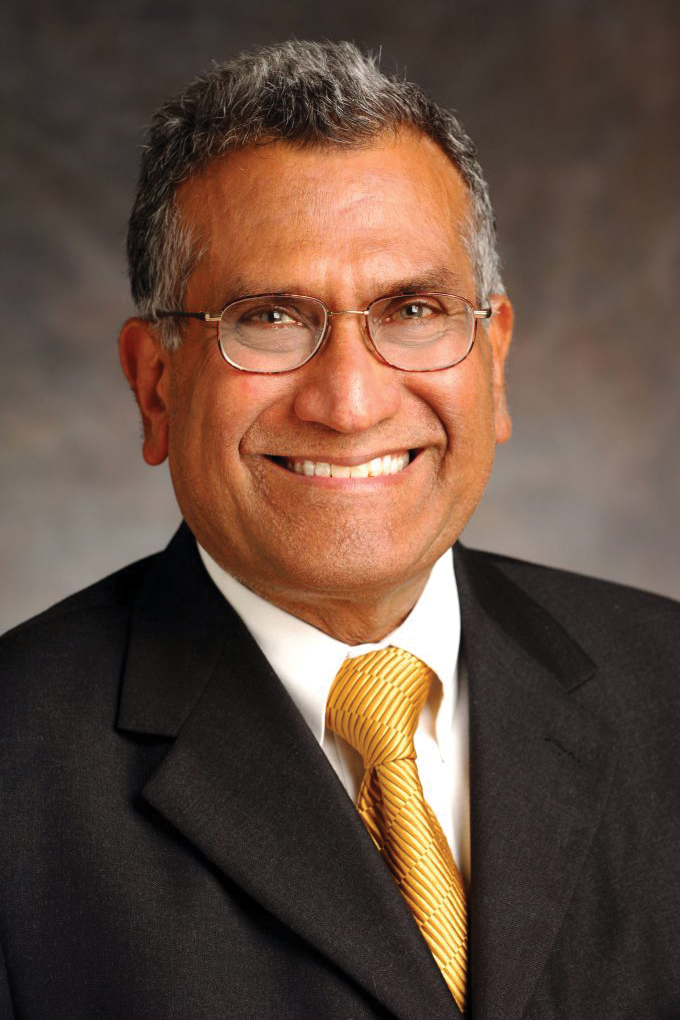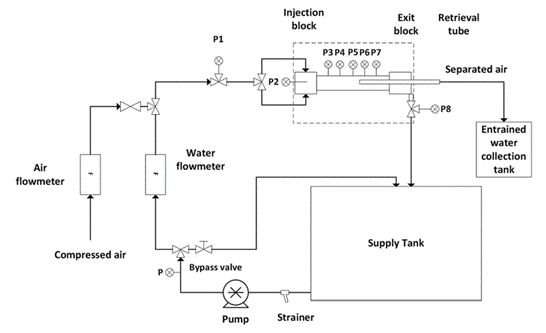Banerjee and Dhir Scaling Desalination for Disaster and Rural Applications
According to projections by the Texas Water Development Board in 2023, Texas faces a critical water challenge. By 2070, the state’s water supply is expected to decrease by 18%, while water demand will increase by 9%. This imbalance could leave 25% of Texans facing municipal water shortages (Alvarado, et.al., 2023). Currently, Texas relies on a mix of water sources: surface water accounts for 42% of the supply; groundwater contributes 50%; and reuse water, which includes treated wastewater, makes up 3% (Alvarado, et.al., 2023).


To address this pressing issue, Dr. Debjyoti Banerjee, Mechanical Engineering Professor at Texas A&M University, James J. Cain ’51 Faculty Fellow, and Texas A&M Energy Institute Faculty Affiliate; along with Dr. Vijay Dhir, Distinguished Professor Emeritus, former Dean of the University of California, Los Angeles (UCLA) Henry Samueli School of Engineering and Applied Science, and former Texas A&M University Hagler Institute Fellow; and doctoral students Jonghyun Kim and Chinmay Chavan, are pioneering novel desalination experiments through seed funding by the Texas A&M Energy Institute. The project unlocks untapped potential of brackish groundwater reserves, estimated at 3.8 billion acre-feet, to be transformed into drinking water and ranch water through desalination. The goal is to determine the optimal operational conditions for desalination by separating pure vapor from saline water through flash evaporation, a process used to separate a liquid mixture into vapor and residual liquid by rapidly reducing the pressure.
Swirl-Flow Technology
The team has developed an experimental swirl-flow apparatus. This compact system combines dynamic flash evaporation and vapor separation. The feed water passes through injection tubes connected to injector passages installed tangentially onto a separator tube. As the water flows, friction and acceleration reduce pressure and cause flashing within the injection tubes, resulting in a two-phase mixture. Centrifugal force from the tangential injection separates this two-phase mixture. The key innovation lies in the formation of a stable vapor core (the lighter fluid) in the middle of the separator tube. The separated vapor is efficiently removed by tapping into the annular vapor core using a retrieval tube mounted in the center of the test section.
Dr. Ashok Thyagarajan, currently at Southwest Research Institute (SwRI), helped with demonstrating the feasibility of this platform as a part of his doctoral thesis under the tutelage of Dr. Banerjee and Dr. Dhir. The team evaluated the system’s performance using brine (similar to salinity levels of seawater) as inlet feed water. With a single-stage system, they achieved thermal conversion and phase separation efficiencies up to 98%. They further improved the purity of the condensate using a two-stage system. In this setup, vapor captured from the first stage was directed to a second set of injector passages connected in series to the first stage retrieval tube. With initial salt concentration of 2.5% by mass (i.e., salt concentration similar to that of sea water), they obtained condensate with salt concentrations lower than 0.001% (which is similar to that of distilled water). By using brine at 6% salt concentration, they were still able to obtain condensate with salt concentrations lower than 0.001%, thus demonstrating that this platform is virtually insensitive to the salinity level of the feedwater.
This also shows that this versatile platform can be deployed for desalination of produced water that emanates from the wells during oil and gas production, especially during hydraulic fracturing (i.e., “fracking”). The entering feedwater needs to be heated, e.g., with energy provided from solar heating. The design can be adapted for heating the feedwater by leveraging waste-heat recovery techniques (e.g., from a diesel engine, gas-turbine, or modular nuclear power plants).
Technology Applications

(Thyagarajan et.al., 2024)
Through Texas A&M Energy Institute seed funding, Dr. Banerjee, Dr. Dhir, Mr. Chavan, and Mr. Kim will improve upon the swirl-flow design to scale up the system for use in more practical applications, with target salinity levels of the brine (feedstock) exceeding 20% ~ 30%. The desalination system is portable and can be scaled-up for permanent use in remote areas where purified water is scarce or nonexistent. The portable system design of the desalination unit can also be adapted for mounting on trucks and 18-wheelers for providing potable water from brackish water (or dirty water) for temporary disaster scenarios.
References
- Alvarado, Astrid; Hecht, Morgan; and Julot, Moise (2023). Texas’ Water Demands Could Outpace Supply in Parts of T0065as by 2070: Comptroller’s Report Highlights Challenges, Progress in Providing Water for a Growing State. Texas Comptroller of Public Accounts, September 2023.
- Texas Water Development Board (TWDB) (2023). Brackish Resources Aquifer Characterization System (BRACES). https://www.twdb.texas.gov/groundwater/bracs/index.asp, (April 2023).
- Thyagarajan, A., Ren, G., Banerjee, D., and Dhir, V. (2024). Experimental Investigation of the Performance of a Novel Adiabatic Swirl-Flow Separation Apparatus in Air-Water Two-Phase Flow. ASME Journal of Fluids Engineering, June 2024, Vol 146 061401-1. DOI: 10.1115/1.4064531. https://doi.org/10.1115/1.4064531
- Chandramouli, V., Jen, J., and Dhir, V. K. (2022). “Experimental Results for a Novel Flash Evaporation and Phase Separation System for Desalination of Sea Water.” ASME. J. Heat Mass Transfer. April 2023; 145(4): 041601. DOI: 10.1115/1.4055764. https://doi.org/10.1115/1.4055764
- Thyagarajan, A. (2024). Development and testing of a novel swirl flow separator by leveraging dynamic flash evaporation for water-remediation and solar-thermal desalination applications. Ph.D. Dissertation, Texas A&M University, College Station, TX.
- Texas A&M Energy Institute Distinguished Speaker Series https://energy.tamu.edu/event/distinguished-lecture-series-in-energy-dr-vijay-k-dhir/; A Novel Concept for Flash Evaporation and Phase Separation for Desalination, August 28, 2023
